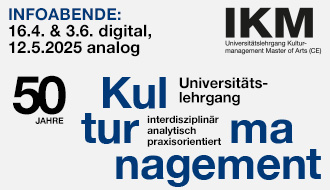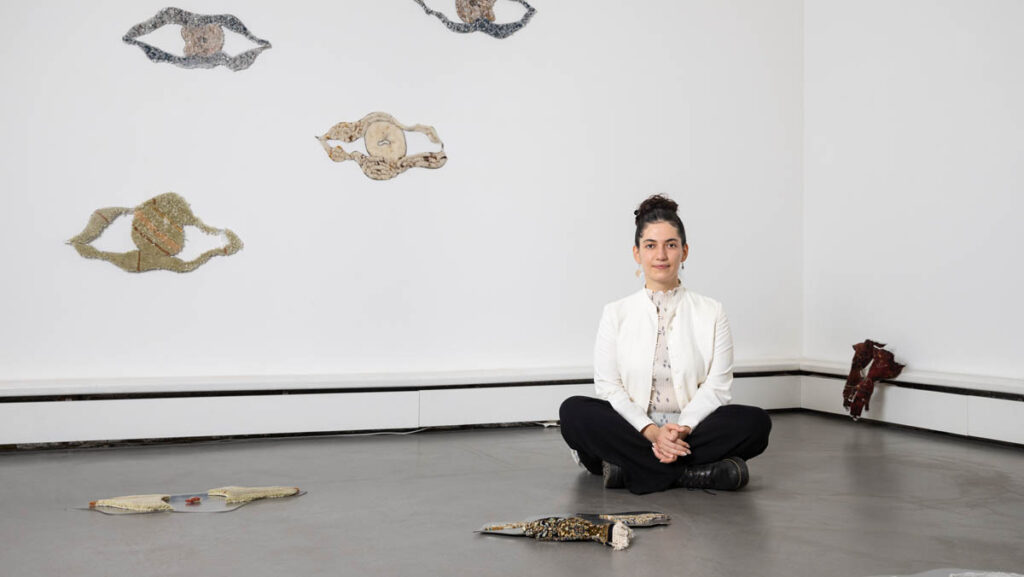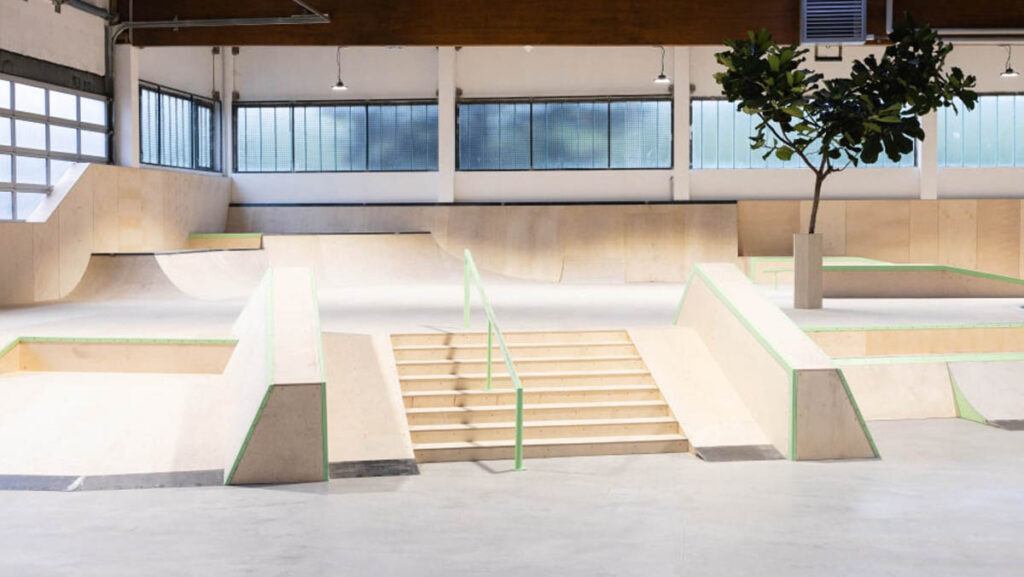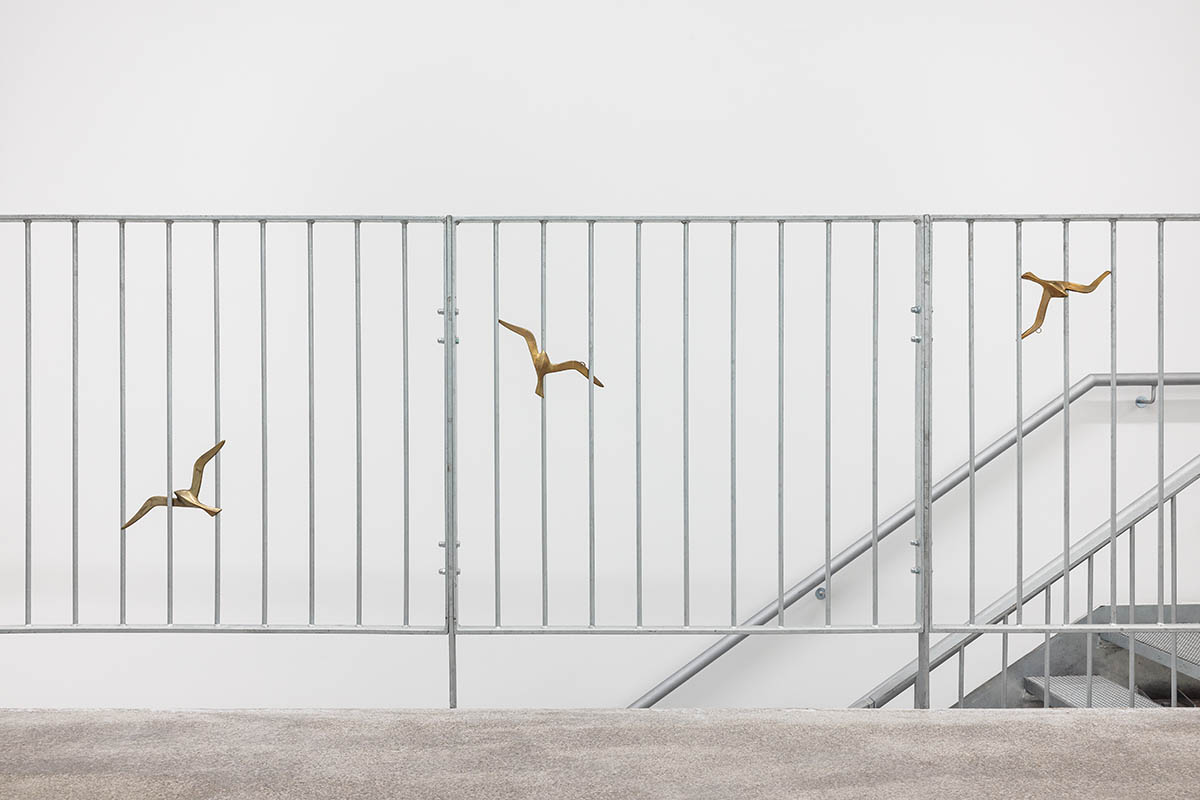
You create your pieces using objects you find at local thrift stores, flea markets, and online marketplaces. Can you tell more about the process of searching?
Yes, sure. The process of searching is the part of my practice that I spend most of my time on. It goes constantly and gets more specific and intense while I’m preparing for a particular exhibition or event. The criteria for search are different and usually depend on the occasion, space, available budget, and my subjective preferences. I might have a certain vision for what I’d like to find, also sometimes I recognize something familiar in the objects that I see for the first time and then I get intrigued by that but also quite often I just have a feeling that some objects find me themselves. Obviously I’m very dependent on the range of the goods in a particular moment and particular time in the places which I consider the sources of my material and inspiration. It might be quite challenging in some cases but I accept this challenge and try to enjoy my interactions with its stream.
The objects you gather remain unaltered in their original form but are reassembled and juxtaposed in new ways. In doing that, you are transforming their utilitarian functions and giving them new identities within these new constellations. Can you elaborate on this act of “liberating” the objects?
Despite the fact that act of ‘liberation’ in the case of my arrangements might seem quite arguable (the distribution of new identities is very subjective and still implies the objects operate in an art context), I like the idea of refusing functional objects to represent and perform embedded functionality and their escape from utilitarian gaze, as if they silently revolt against the common order and deny to serve, even if it’s only for the relatively short period. Of course, there are a lot of my projections in this case, I imagine joining their sabotage and sharing the very joy of it.
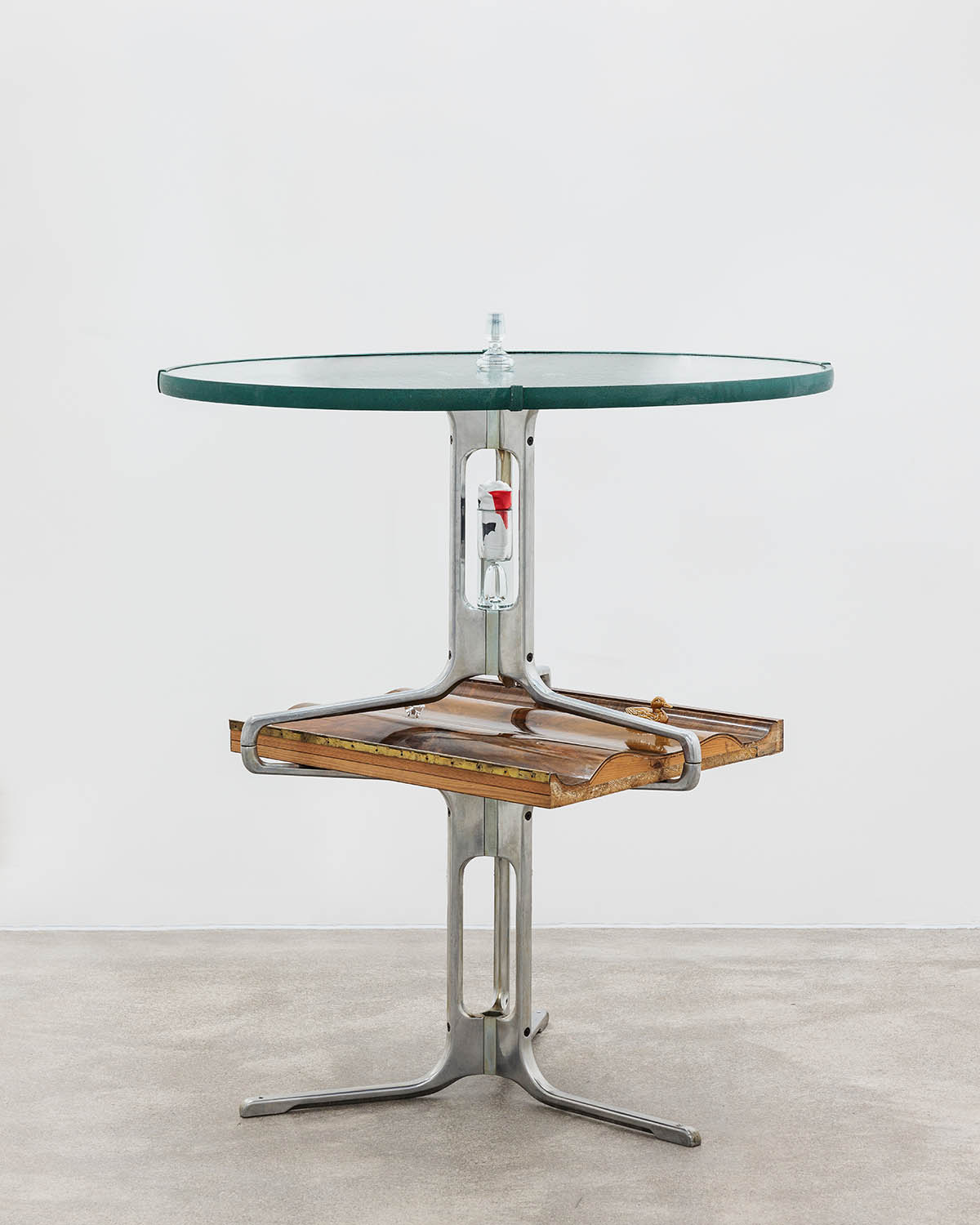
Once your works are assembled, their composition appears fragile and precarious. The materiality of your pieces, such as glass, enhances this feeling. I believe this sense of precariousness and impermanence is central to your practice?
Those qualities are quite important, yes. I guess it has a lot to do with my experience of previous studies in my home country and my mode of living. Conservative academic art educational system with the main focus on craftmanship gave me specific practical knowledge and the habit of everyday studio practice which I appreciated, however the most precious thing that I had there was the time for self-education as well as for complete disillusion of technical skills as an essential criteria and validation for artistic practice. When I made my bachelor in printmaking in Minsk and started to study sculpture in Vienna, it was already clear that traditional craftsmanship is definitely not an approach I’d like to apply in working with objects. I guess I still might get some pleasure out of long and laborious process of drawing or painting but it just doesn’t resonate to me now. Simple and relatively quick manipulations, that not require any specific skills, seem to be a better fit. Regarding the sense of precariousness – well, I see the precarity in my pieces as natural extension of the precarity of living that I share with a lot of my colleagues and peers.
Considering the topic of temporality, after the exhibition ends, you disassemble the works, and the objects are either resold (apparently on the same platforms where they were purchased) or repurposed for new sculptures. Does this relate to your critique of the commercialisation and the fetishisation of the art object, as well as the power structures of the cultural field?
It is, of course, one of the ways how one can read it. But I would still mention the initial point for such working method which is to my mind one of the main struggles of the artists who are dealing with sculpture – the question of “what to do with the works after the show”. When I was starting to work with objects, I didn’t have a proper studio space and I couldn’t afford to store the works after the exhibition, it was clear that to take part in the shows, I had to find a solution. Since I was also often borrowing (and I still do) the objects from other people who were related to a particular show or event, I decided against bringing most of the objects back to their initial sources. It took me some notable effort to learn how to let the pieces go but after all I feel that it’s fair and careful to the objects, it is my gratitude for their companionship, if you want. On the other hand, by making this gesture a part of my method I’d like to underline one of challenging conditions of art production which is perhaps not always so obvious for the audience.
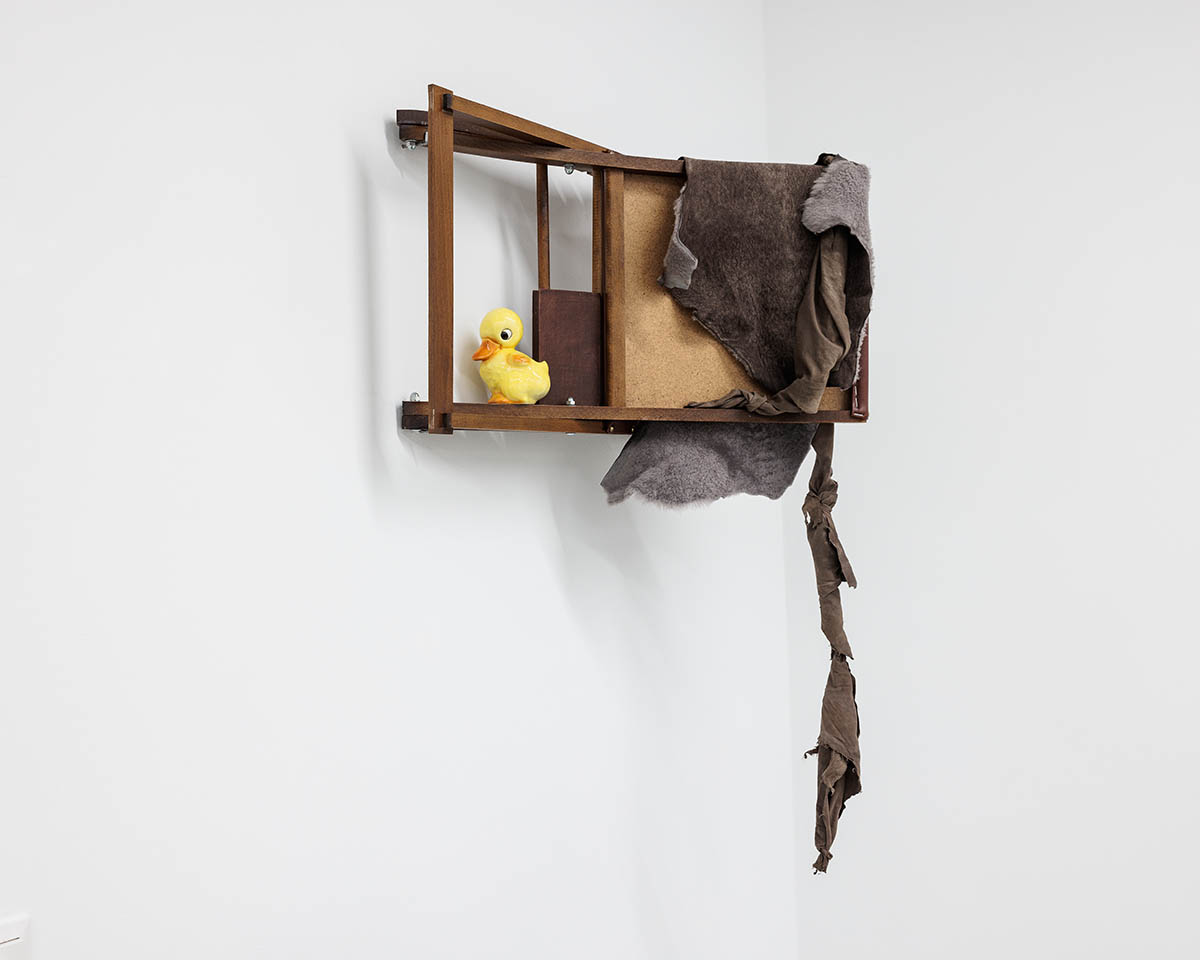
Your works are site-specific. During my visit to your last exhibition, ‘Teilzeit in Senile Ties,’ at the gallery Commune in Vienna, I learned that you spent many days creating your objects in that space. How does the history or background of a particular found object relate to the context of the space in which it is exhibited? What does the exhibition space itself mean to you, especially considering that the works exist only during the specific period of the exhibition?
Yes, I had a luxury of working in the gallery for almost the whole month of August. It was a bit of a studio situation and something that I have never experienced before – usually I have around 4-5 installing days for making my arrangements on site. The fact that it’s a space of a commercial gallery affected my initial idea for the show and my choices of the objects to a big extend. Also several pieces in the show are containing the objects that I found in trash containers during the walks in the area around the gallery. Concerning the term ‘site- specific’(which to my mind got so overused at some point that lost almost all credibility), I would say this aspect of site-specificity in case of my practice might be a certain over-stretch or at least not the perfectly matching description. I think I have some sort of sensitivity to the space and spatial conditions, my flexibility in working with arrangements allows me to react and to engage with the space at some level and almost all of my works are appearing only once in one particular space, yet the self-sufficiency of majority of the pieces potentially would let them appear in other spaces and contexts without being completely destroyed. For instance, at the show in Commune I would mention only two works that are ‘true site- specific’ the way I understand this term: ‘Birds II’ and ‘Small Hat’.
In your last exhibition, there is a notable interconnectedness and repetition of details, such as the use of yellow rope. Could you discuss this narrative aspect that enables the objects in the exhibition to interact with one another and perhaps reveal something about each other?
I like to work with repetitions in my series, to me it has a lot in common with the language and speech, with the way I talk (and I repeat myself constantly but maybe less consciously than I do in my artistic practice). The yellow rope or to be more precise, the yellow suitcase belts by Raiffeisen Bank that I found in Carla, are appearing in different iterations and becoming some kind of a red line that goes through the whole show. But it is perhaps the only line that is undoubtfully apparent. I’m used to work in series and I imagine the pieces in my series as parts of a landscape or an eco-system where the pieces would build relationships and could open up through each other but not to be aligned in some sort of straight orders. In this show, I see the structure of the series as a non-linear narration where different references are acting like sporadic appearances or interrupted narratives that might be interconnected but not necessarily have to. I’m thinking about the non-linearity of time, of the processes, happenings, and encounters that go parallel to each other or overlap each other and reappear spontaneously.
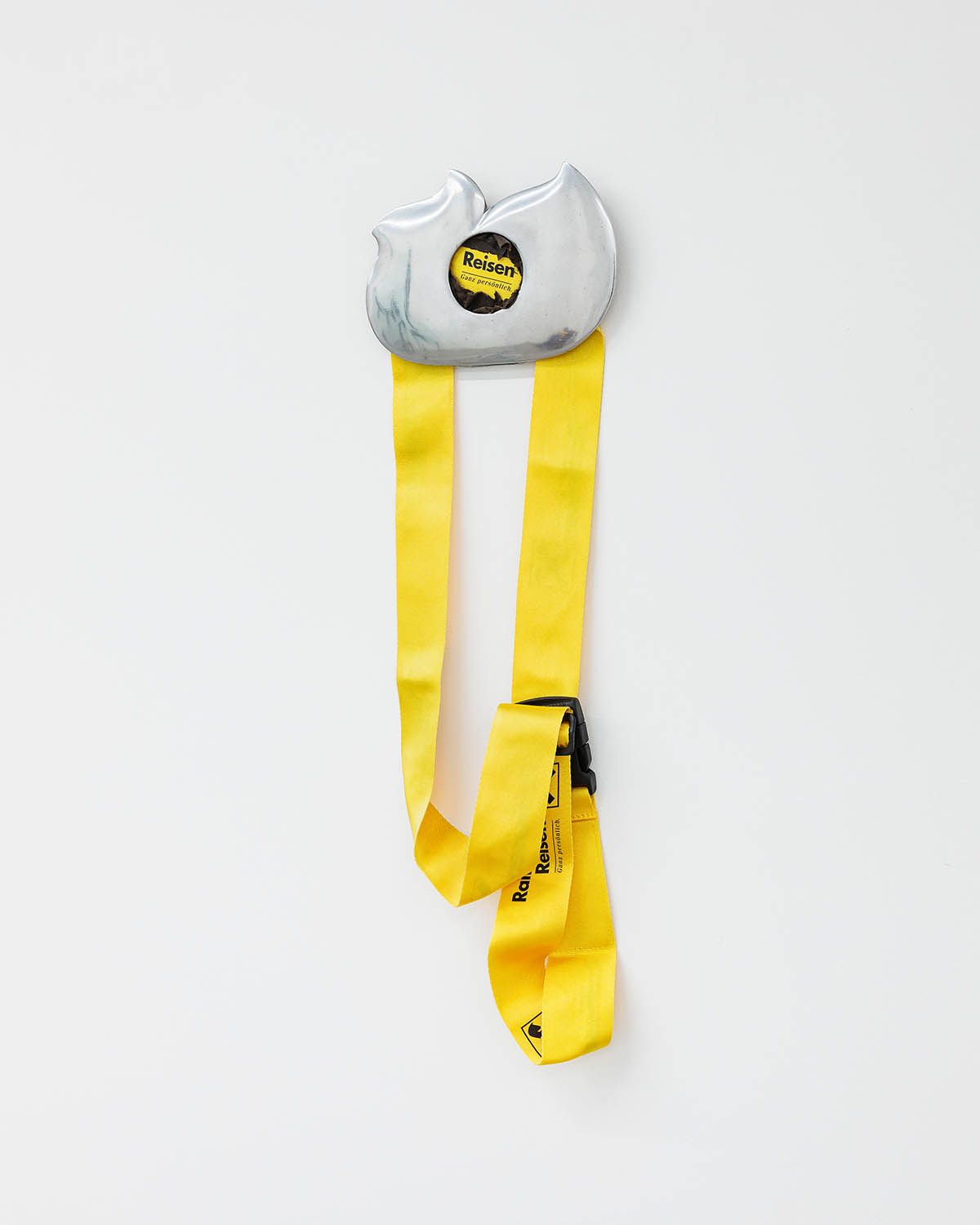
In some of your pieces, there appears to be a tension between danger and intimacy, or even seduction, alongside a feeling of entrapment. For example, the squirrel inside a metal nutcracker, the rope that holds the chair from falling on a vulnerable glass globe, and the inflatable yellow hand that invites us to open the lid of the wooden box. Could you tell more about this aspects in your latest exhibition?
The word ‚tension‘ might be one of the key words to describe what is going on in many of my arrangements. I guess partly the reason for it might be in the way I’m assembling the objects – I don’t use glue or screws for putting the things together and mostly rely on gravity and physical qualities/resistance of the material of each object. Also some combinations of objects with different or opposite formal features might create similar effects. In my latest exhibition, I’m following the same logic of arranging that I applied in previous shows with perhaps more attention to detail in some pieces and supporting the feeling of physical tension with some references to recent and historical events, though I also highly value the moments of natural and direct encounter with the art work without any context.
I recall that you prefer not to elaborate on each of your pieces, allowing the titles alone to provide context as hints for visitors. Could you still share more about the title ‚Teilzeit in Senile Ties‘ at the Commune gallery?
Yes sure! By the way concerning the context of each of my pieces, in case one would like to go for it, I would suggest reading a wonderful exhibition text by Abby McKenzie. Regarding the title for the show – I came up with it when the show was already done. I was looking for something playful and rather light, and I thought that the prevalent phonetic aspect of the title might work well in this occasion. I think I liked how it feels and bounces on my tongue when I’m pronouncing it and also how the sound of the second part appears as a reverse of the first part. I went for the combination of German and English which is literally the way I’m talking sometimes, especially when lacking vocabulary in one of them. I didn’t want to have it too descriptive and keep it rather abstract, though at the end it can be seen as a remark or a minor footnote to the show.
Gleb Amankulov – www.instagram.com/tino__an/



